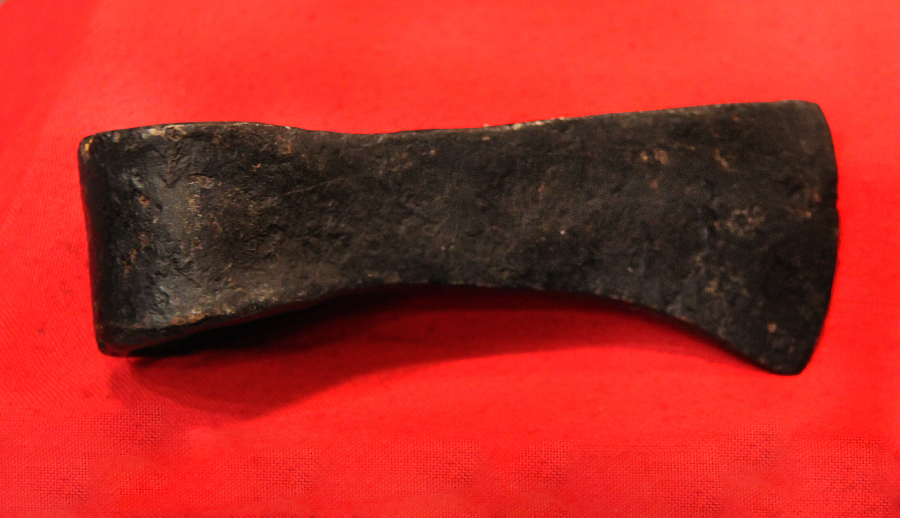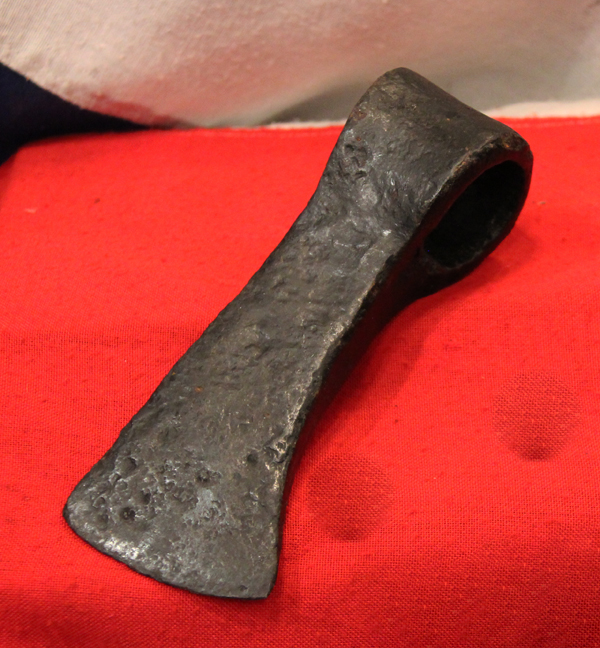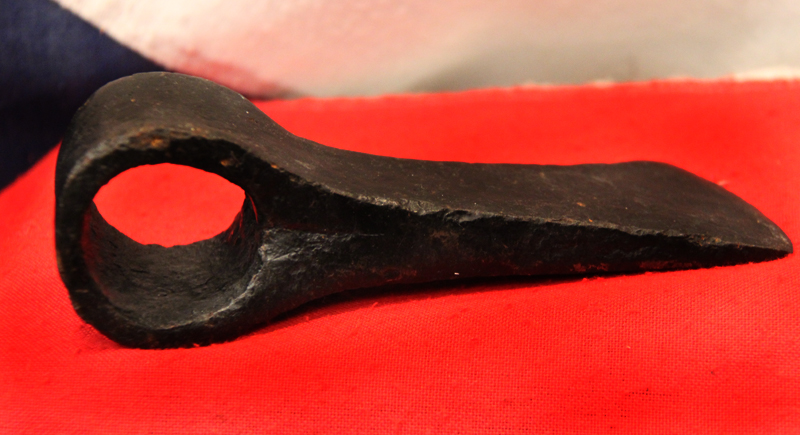A Superb, Heavy Grade, Original Viking Throwing Axe, Around 1200 Years Old. A Superb Opportunity to Own An Original Artefact From One of The Great Periods Of History.
Especially today with so many representations and depictions of the the great Viking age and peoples being created into films and documentaries currently. The interest in original Viking artefacts has never been greater than it is today. In our Brighton gallery almost all of our daily thousands of visitors make a beeline to all our amazing original Viking pieces, the interest is literally unceasing. Many are spellbound by their historical significance and almost all are surprised to be able to view up close, let alone acquire, such amazing pieces. And this fine example is one of the least expensive pieces we can offer currently, bearing in mind original Viking arms and armour we can show and have had recently, can easily approach up to around £40,000 each.
Viking Arched Axehead made and used from the 9th, and in use up to the 12th century AD.
An iron axehead with circular socket, narrow blade with curved edge. For reference of type see; Cf. Sedov, B.B. Finno-Ugri i Balti v Epokhi Srednevekovija, 1987, table CXXIV 7".
Weight 865 grams, 17cm (6 3/4").
One of the most famous Viking axes is Helm (named after the Norse death goddess), which belonged to King Magnus of Norway and Denmark. He is said to have inherited the weapon from his father, Olav Haraldsson of Norway, whose ax features prominently in Norway’s national coat of arms. Some Viking axes if they were wielded by a particularly strong and skilled warrior could even cut through chainmail and helmets. When King Magnus’s poet credited the king with being able to split heads like firewood, he wasn’t necessarily being hyperbolic. Writing about the pre-Viking Franks and their use of throwing axes, the Francisca, Procopius makes it clear that the Franks threw their axes immediately before hand to hand combat with the purpose of breaking shields and disrupting the enemy line while possibly wounding or killing an enemy warrior. The weight of the head and length of the haft would allow the axe to be thrown with considerable momentum to an effective range of about 12 m (40 ft). Even if the edge of the blade were not to strike the target, the weight of the iron head could cause injury. The francisca also had a psychological effect, in that, on the throwing of the francisca, the enemy might turn and run in the fear that another volley was coming. It is most logical that the Vikings may well have adopted this system of axe throwing combat from the earlier Franks, as it seemed most effective in numerous combat arenas. Almost every iron weapon that has survived today from this era is now in a fully russetted condition, as is this one, because only the swords of kings, that have been preserved in national or Royal collections are today in even a relatively fair state of surface preservation and condition after over 1000 years, but almost all though are not in any better condition than this beauty.
Code: 22008
875.00 GBP





